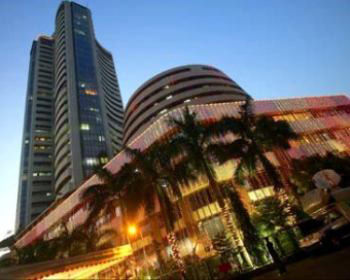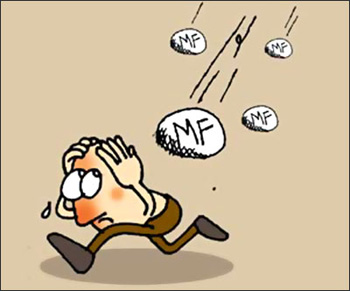Tania Kishore Jaleel in Mumbai
Expense ratio
This is what investors pay the fund house for managing their funds.
It includes the cost for managing and operating the fund, besides the administrative and sales expenses.
While equity funds can charge an expense ratio up to 2.5 per cent, debt funds can charge up to 2.25 per cent.
Say, if you have invested Rs 10,000 in a fund with an expense ratio of 1.5 per cent, you will be paying the fund house Rs 150 annually to manage your investment.
A higher expense ratio will mean lower returns as it is deducted every year.
The net asset value of a fund is calculated after considering its total expenses.
. . .
What are the tech terms in a MF factsheet?
Image: Bombay Stock Exchange.Portfolio turnover
This measures the frequency with which a fund house buys and sells stocks.
If it does so frequently, it will incur higher transaction costs.
This will, in turn, impact the returns since higher costs mean lower returns for the investor.
Portfolio turnover is calculated by taking the total number of new scrips bought or sold (which ever is lesser) and dividing it by the total NAV of the fund.
. . .
What are the tech terms in a MF factsheet?
Standard deviation
The standard deviation of a fund tells us how much its returns have deviated from expectations, based on its historical performance.
It measures the volatility and, hence, the risk. The higher the standard deviation, the greater will be the volatility of the returns.
So, if the standard deviation is 50 per cent annually, the fund's returns can go up or down by 50 per cent from its average returns.
These values are updated on a monthly basis.
. . .
What are the tech terms in a MF factsheet?
Sharpe ratio
This is used to compare a fund's risk-adjusted returns, per unit of the risk assumed. Simply put, it informs us if the returns are due to good investment decisions or the risk taken.
The higher the sharpe ratio, the better the fund's historical risk-adjusted performance. You can compare the sharpe ratio of your fund with the benchmark index.
. . .
What are the tech terms in a MF factsheet?
Beta
This compares the fund's volatility with that of its benchmark.
It gives us a sense of how much one can expect it to fall or rise when the market moves down or up.
Typically, if a fund's beta is higher than 1, it is more volatile than the market.
For example, if it is 0.5, the fund can outperform the market up to 50 per cent in a rising market.
In a falling market, the fund is likely to underperform the market up to 50 per cent.
That is, it has a history of fluctuating by 50 per cent.







article